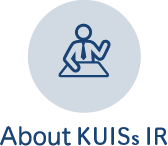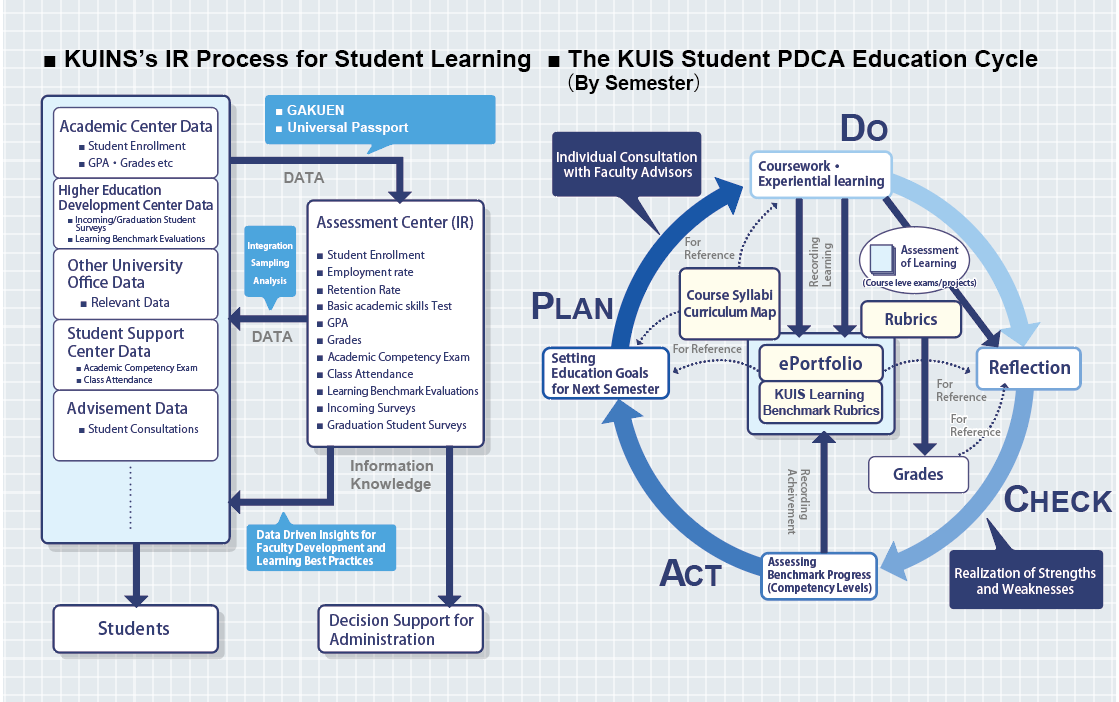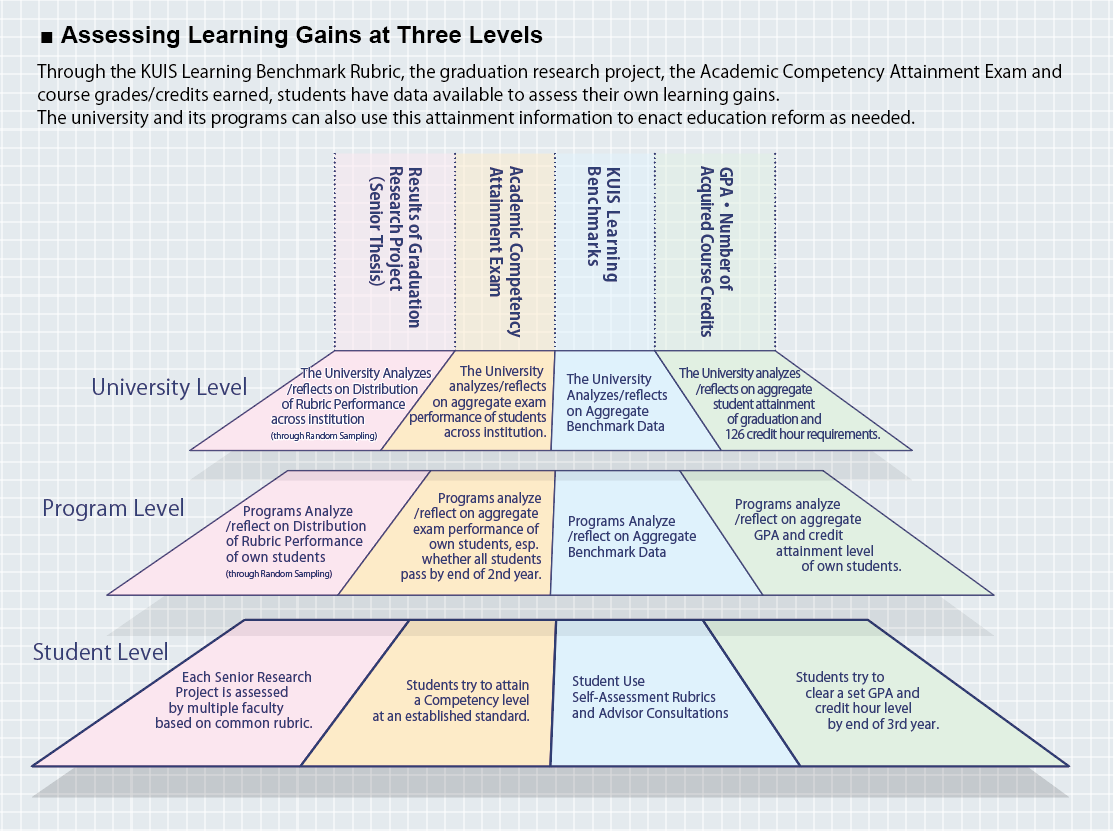The Outline of KUISs IR for Student Support
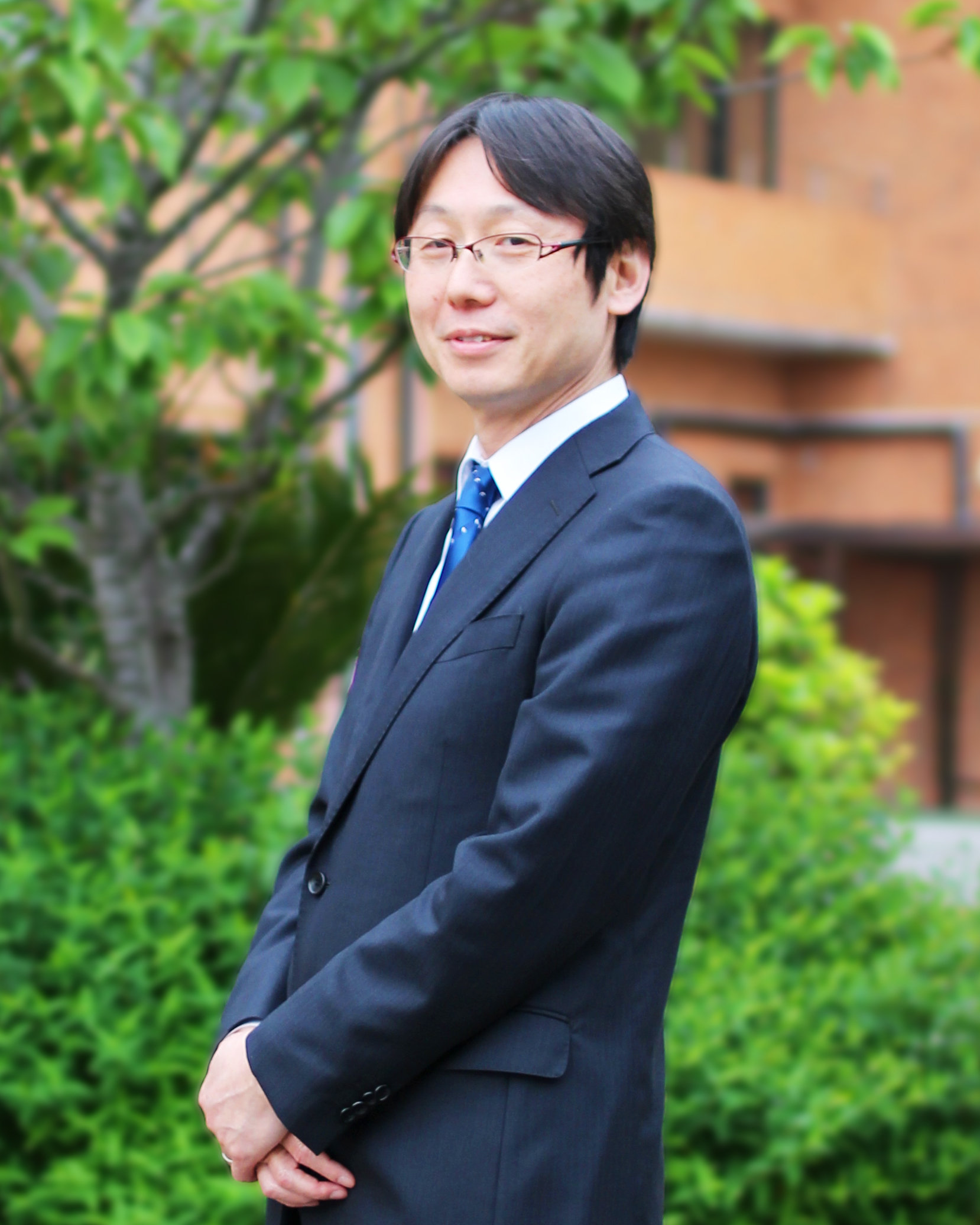
-
Ensuring quality of education using various student data
IR initiatives started at KUISs in the early 2000s, when the concept of IR had not yet won general recognition in Japan. The hub of these initiatives was the Center for Assessment and Institutional Research (later the Evaluation Center), established in 2004 as a subsidiary organization of the Research and Development Center for Higher Education. I was appointed head of the office, wherein data was collected from individual faculties for self-evaluation reports compilation.
At the same time, the university advanced student support activities based on individual students' data. KUISs established Japan's first learning support center and thus already had in place a mechanism to support student learning if needed. During this time, it introduced student portfolios, completing a system where students could record their learning achievements and advisers could check them on a regular basis. This involved the physical exchange of files in the beginning and was later digitized and evolved into ePortfolio. In combination with the KUISs Academic Benchmarks defining the academic abilities that students should acquire before graduation, the system enables students to manage their personal goals efficiently. In this way, the combination of various mechanisms allows students to follow a PDCA cycle of doing, checking and acting toward continuous improvement, bringing them closer to their goals in the course of daily learning.
The Evaluation Center manages a database along with other student information, and uses it to analyze the current situation toward improving student support and education, and assessing whether individual faculties and the university as a whole is meeting educational goals.
Student support and university operation based not on intuition or knowledge gained from experience, but on facts backed by subjective data are essential today for ensuring quality of education.
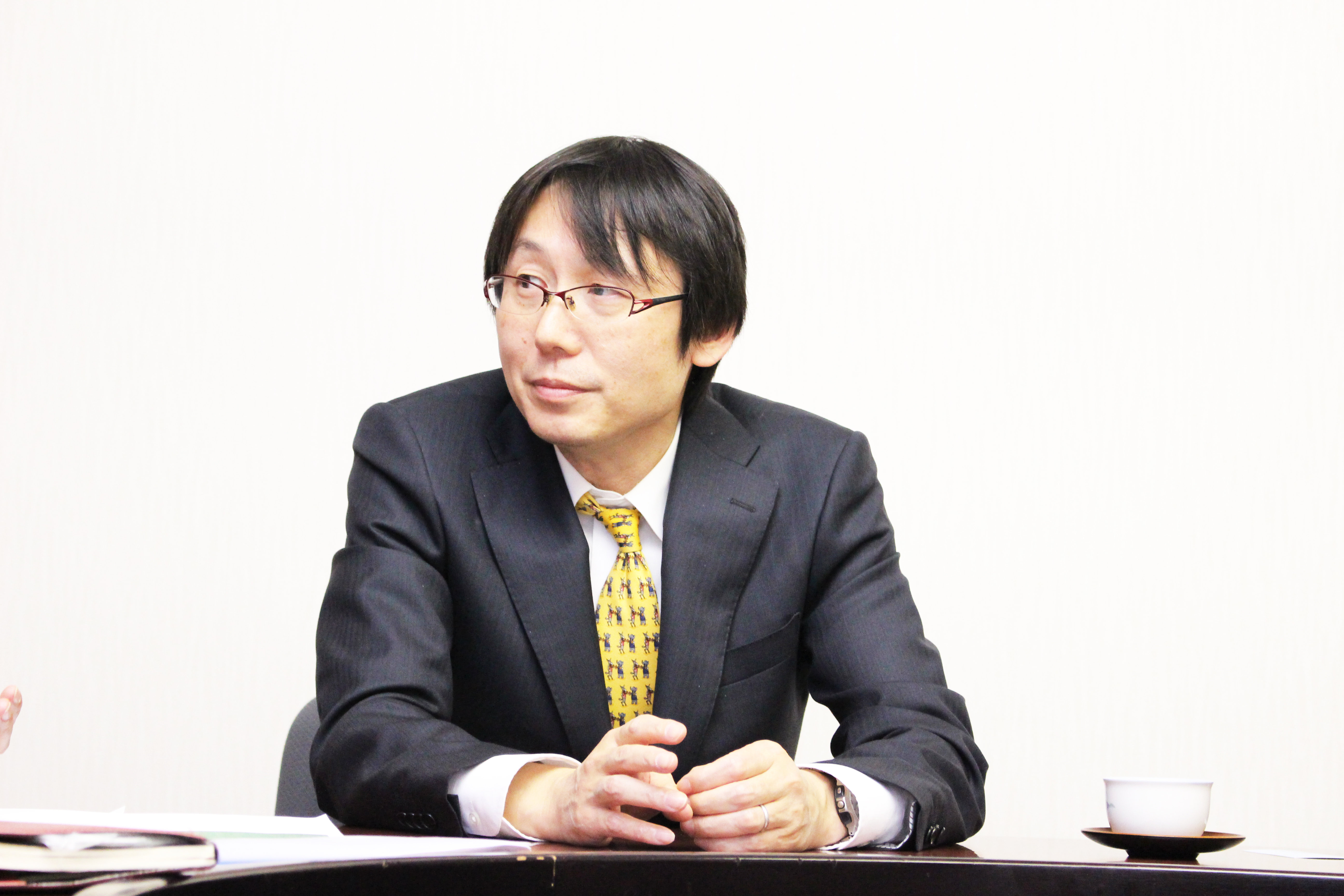
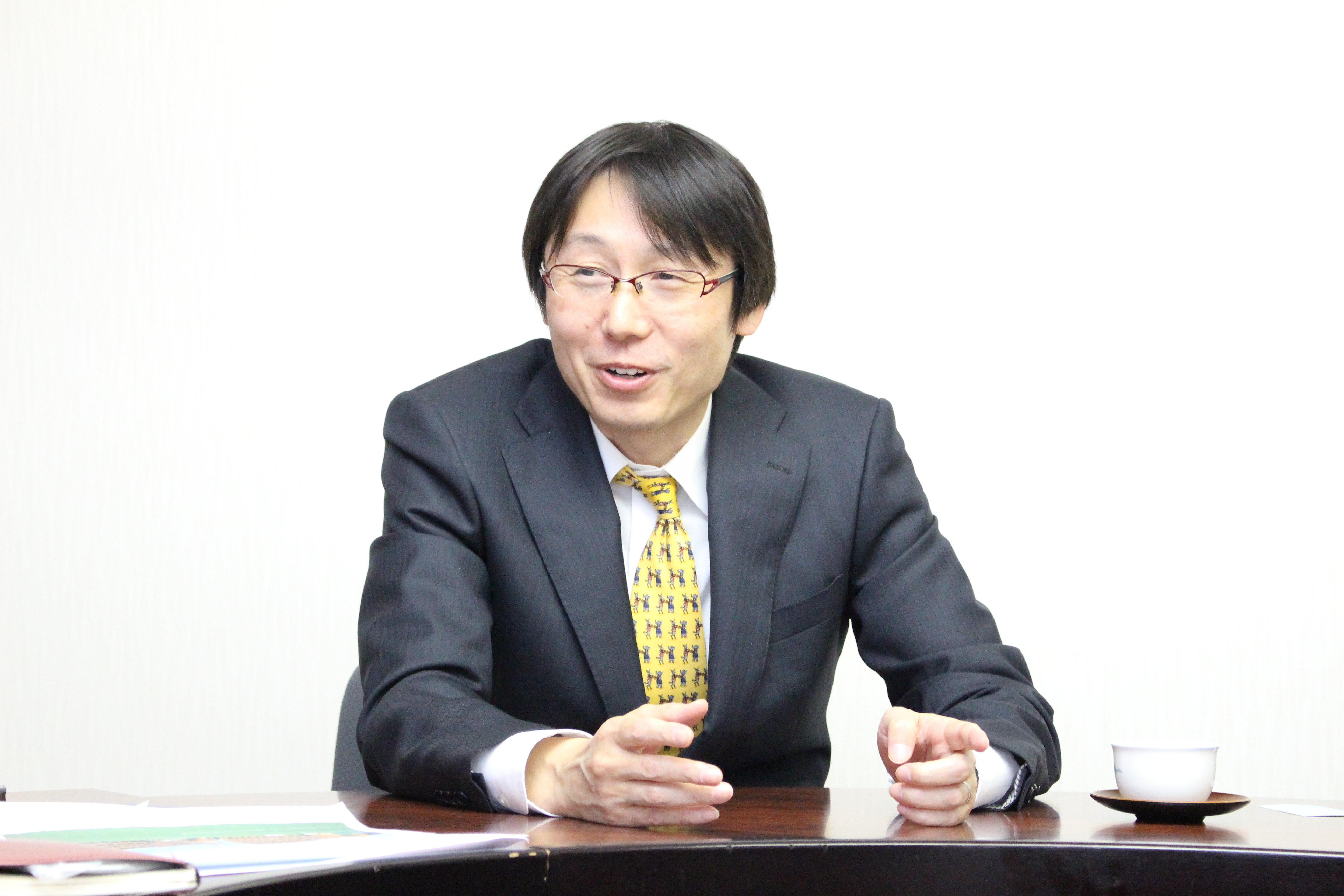
-
A broader range of student data toward education that highlights our strengths
On the subject of student support, I should also touch on our efforts in first-year education, based on an original program developed by KUISs and continuously brushed up over the years. The initiative started when we created a program for freshmen that offers meticulous guidance in basic learning skills, such as how to take notes and write reports, with the aim of reducing the number of students who have trouble keeping up and eventually abandoned their studies. What started out as a single 90-minute-long lecture turned into a required subject in 2002, and led to the publication of Chi e no suteppu (Steps to Knowledge, Kurosio Publishers). This textbook caused something of a sensation and is used as teaching material at a large number of universities today. First-year education has become a given at any university in Japan, but it was KUISs that first developed the program.
Based on our pioneering initiatives, in recent years, KUISs promotes a collaborative program with three other universities for building an educational management system for active learning. We also collect additional data through membership in an IR Consortium, comprising 49 universities across Japan, which enables us to gain a more comprehensive understanding of KUISs strengths and weaknesses. We now see, for instance, that KUISs students are weak in quantitative analysis and expressive skills, but strong in understanding different cultures, cooperating with others, and making presentations. In the future, we hope to make use of such analyses and observations in entrance examination reforms, continuous education improvement, and career support.
In the United States--the birthplace of IR--some universities are building a lifelong database not only of students' learning achievements but also their career path after graduation. Others offer a system in which students can directly contact and seek advice from alumni who serve as role models. I hope to follow this example and ultimately create a mechanism for connecting generations of students through IR.
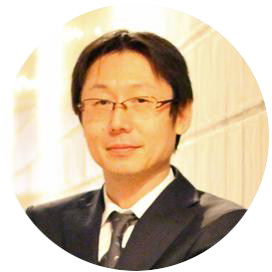
-
PROFILE
Professor Kiyoshi Fujiki
Graduate Education: Doctorate Course Completion in Business Kwansei Gakuin University; Masters Degree in Business, Kwansei Gakuin University
Professional Roles: Professor of Statistics, School of Management, Kansai University of International Studies; Director of KUINS Assessment Center
Main Publications: Chief Editor/Co-author, Chi e no Suteppu [Step Up Knowledge] (4th edition), Kuroshio Publishers, 2015: Co-author, Risaati nyumon: siteki na ronbun-repooto no tame no [Introduction to Research: Writing Academic Articles and Reports], Kuroshio Publishers, 2013; editor, Yume wo kanaeru kyaria dezain [Career Design to Realize Your Dreams], Kuroshio Publishers, 2011; Co-author, Zero kara no tokeigaku [Statistics from Zero], Kuroshio Publishers, 2010 etc.

